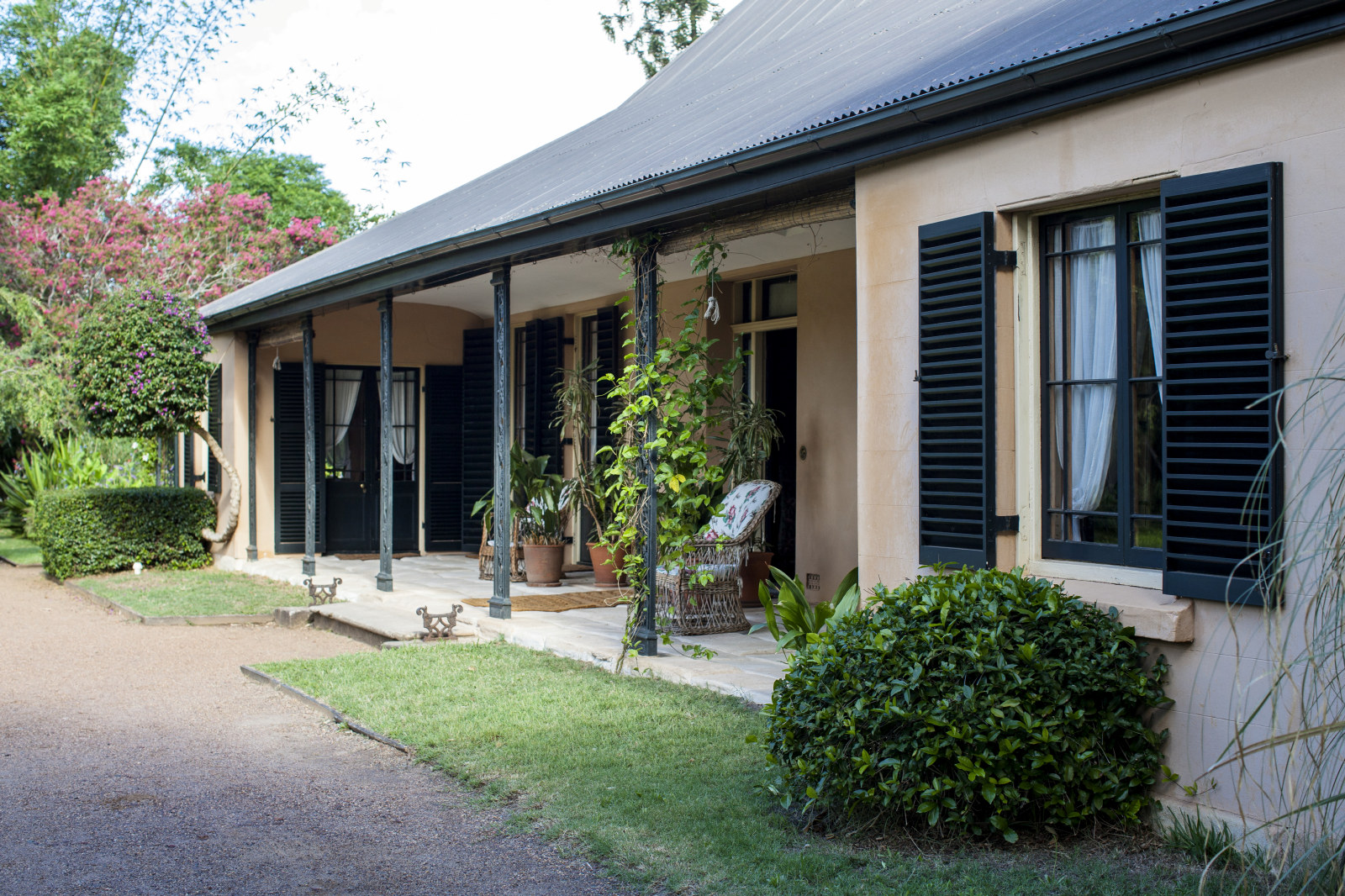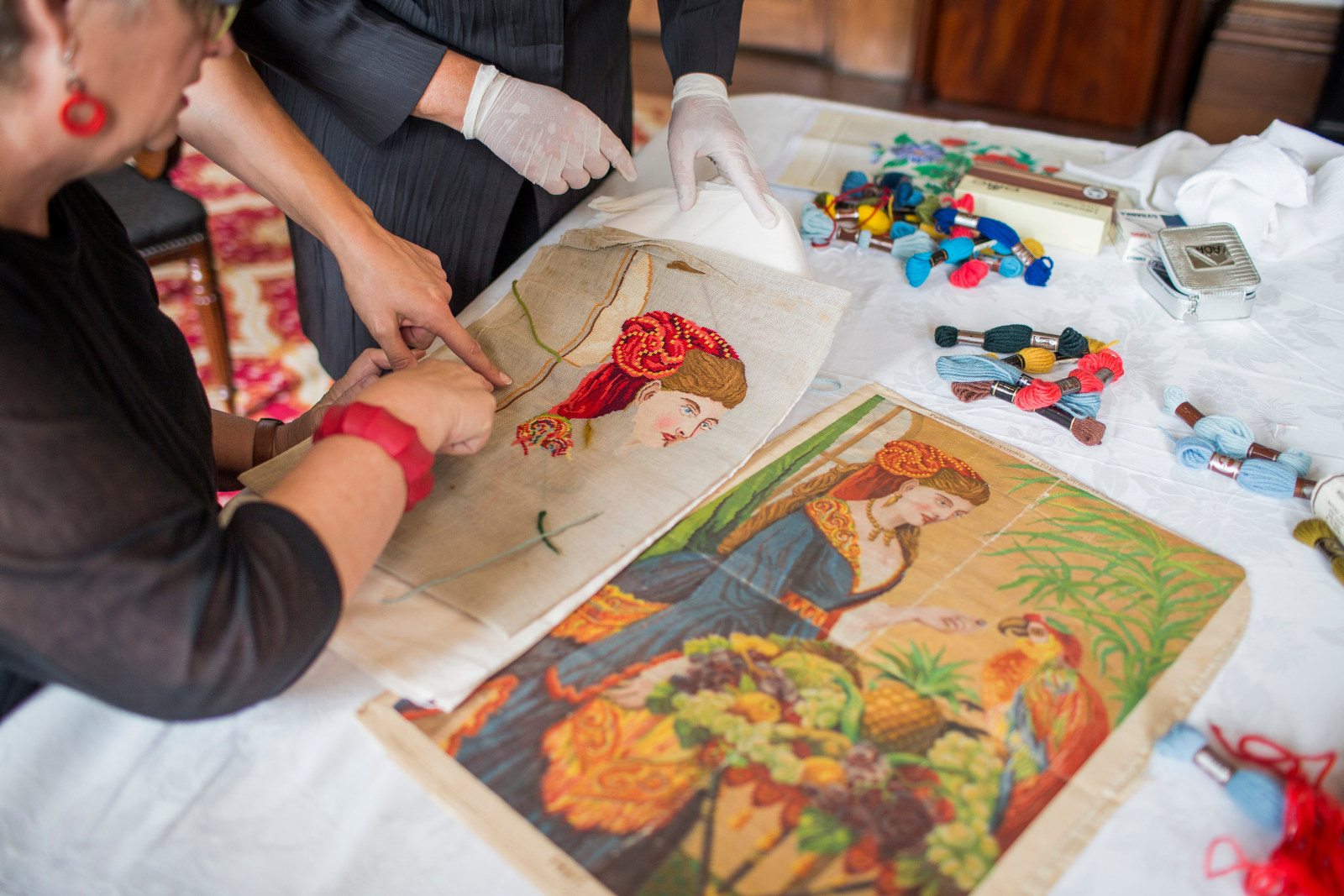Abundance & curiosity at Elizabeth Farm
One of the great pleasures of visiting Elizabeth Farm is strolling from the drawing room onto the winding paths of the pleasure garden, just as the original occupants, the Macarthur family, did two centuries ago.
While the pre-colonial history of John Macarthur (1767–1834) remains unclear, in the colony he identified firmly with the gentry. This was a social class for whom a carefully landscaped estate, and a fashionable residence surrounded by a tastefully planted garden were essential status symbols. But what do we know of the original appearance of this estate in Parramatta and the garden created there by Macarthur and his wife, Elizabeth?
A lost garden
After 150 years of subdivision and development very little remains of the 40-hectare (1000-acre) estate that surrounded Elizabeth Farm, where the Macarthurs relocated in 1793. Its landscape once included a picturesque thinning of the native trees, willows planted beside creeks and ponds, and stands of Aleppo pines, blue gums and oak trees, as well as fields cleared for agriculture and, initially at least, flocks of merino sheep. The extensive kitchen garden originally located to the east of the house is long vanished – a supermarket stands on the site today – and the sweeping views north to the river have long been covered by housing. A number of towering hoop pines (Araucaria cunninghamii) and bunya pines (Araucaria bidwillii), the distinctive signature trees of so many colonial gardens, do survive today. These still provide important visual cues, both locating the main house from many miles around and pinpointing the estate’s second residence, nearby Hambledon Cottage. These important trees sit alongside jacarandas, a crepe myrtle and a palm planted by Elizabeth Farm’s 20th-century owners, the Swann family.
Surprisingly, in an age when sketching was ubiquitous, almost no garden views of the estate are known from the early period that could guide the replanting. The well-known 1822 print by Joseph Lycett (above) shows a distinctly idealised landscape, a vision of an English estate park complete with a strolling couple pointing out the features.
Commissioned by the Macarthurs' fourth son, James in 1859, a later landscape by Conrad Martens (above) also focuses, nostalgically, on the same view: the house set on the low ridge above the Parramatta River floodplain, with fields below. A single view of the garden shrubbery by Martens shows a glade-like area, with a rustic wooden bench that has been replicated today.
Martens’s preparatory sketch (pictured below) shows a mix of plants, a few with basic labels – ‘flag leaf plant’, ‘bay tree’ and ‘china rose’.
Both of Martens’s views were, however, painted nine years after the death of Elizabeth Macarthur (1766–1850), and it is debatable how much of its earlier appearance was then still extant. In his estate view, he may have omitted the iconic araucarias for clarity or to represent an earlier time – certainly, from the 1820s flocks of merino sheep weren’t seen at Parramatta. There’s even considerable variation between Martens’ preparatory sketch and the finished painting. Two later views show vines on the verandahs, a stand of bananas (likely Musa cavendishii) and pampas grass, all since replanted by Sydney Living Museums.
‘Reading a garden’
In the absence of images, we have a garden that survived in text. In copious letters and account books, references to specific plants abound – though specific locations are frustratingly absent. One important early letter, dated 1816, details a bountiful kitchen garden with 23 fruiting trees, from oranges and peaches to pomegranates, loquats, shaddock and guava. [1]
The garden today, re-created when Elizabeth Farm first opened as a house museum in 1984, is based on these records, in much the same way that the house’s interiors have been furnished according to inventories and other documents. In summer the drawing room closet is full of the scent of the purple heliotrope (Heliotropium arborescens) growing nearby, just as it was in 1841 when Elizabeth wrote to her son Edward (b.1789)
‘Your sisters are just returned from a walk in the Garden – they bring Camelias – red, white … the Garland flower [Daphne cneorum] & Heliotrope’. [2]
One camellia, the distinctive ‘waratah’ camellia (Camellia anemoniflora), first arrived at Elizabeth Farm in 1831 and was later transplanted to the family’s country estate, Camden Park, where it still flowers every year.
Alongside the roses and foxgloves sit plants gathered from around the world, including aloes, agaves and Cape Bulbs. An olive tree on the front carriage loop of the Elizabeth Farm estate is likely that described by Thomas Mitchell in 1831 as ‘the first olive-tree ever planted in Australia’. [3] Many plants in the Macarthurs’ garden started as prized botanical specimens, but flourished in the temperate climate and became commonplace:
… The China rose introduced into the Colony by your dear father, is now blooming into [a blaze?] Of beauty around the Garden fences and in various places now almost in every Cottage – yet though become common it is still a lovely plant – and Evergreen – the foliage soft and flexible and yielding flowers, more or less, throughout the year – We have a variety of other Roses – sweet scented – and beautiful in their season – but not so enduring …’ [4]
A family of gardeners
While this horticultural bounty served as a symbol of the family’s wealth, taste and education, it was also a genuine passion. All members of the Macarthur family shared a love of gardening and plants, though brother and sister William (b.1800) and Elizabeth (b.17902) excelled. William housed a large botanical collection at Camden Park, from where he also ran an extensive nursery. His nursery catalogues tell us much about what was available to colonial gardeners. His sister meanwhile took over the care of the garden at Parramatta:
12 May 1831, Sydney … At Parramatta there is a great change for the better in Aunt Eliza’s garden, as the children call it, even William pays a tribute to your sister’s perseverance and attention to horticulture. Our Portugal laurel has blossomed beautifully this year. We have made a small quantity of olive oil and we have had capers for our boiled mutton.’ [5]
The quest to successfully grow capers (Capparis spinosa) in a climate quite unfriendly to the plant appears in letter after letter, year after year. No doubt the crop was small, but it was celebrated as a personal triumph.
Importantly the family valued native plants – ‘dear evergreens’ as Elizabeth named them. ‘[T]he native shrubs are also in flower, and the whole country gives a grateful perfume’, she wrote in spring of 1795. A tall kurrajong (Brachychiton populneus) still growing in the east garden even predates the house, a potent reminder of the indigenous landscape that underlies that of the past two and a quarter centuries.
Plants and memory
The Macarthurs treasured plants for more than their aesthetic or commercial value; they were sentimental reminders of family and friends. In numerous letters to her eldest son, Edward, Elizabeth wrote that on walks they thought of him as they passed trees and bulbs he had planted or sent them from England. After visiting Elizabeth Farm Thomas Mitchell also wrote of the emotive associations of a garden:
… the garden, to him who seeks a home in distant colonies, must ever be an object of peculiar interest; for there, while cultivating the trees, fruits and flowers of his native land, the recollection of early days, and of the country of his birth is awakened by the vivid colours of the simple flower which his industry has reared, and which he knows to be a native of the soil to which he himself owes his existence. [6]
To the Macarthurs, however, no matter how strong the memory of Britain, the Australian landscape with its evergreen eucalypts was ‘home’.
Published on
Related

'A most excellent brick house' Elizabeth Farm
Curator Dr Scott Hill explores some of the enduring mysteries buried in the architecture of Australia’s oldest surviving homestead

A stitch in time
Tatting, knotting, knitting, pin-tucking, crocheting, pinking, stitching, stuffing, embroidering … needles fly at Elizabeth Bay House

A taste for the ornate
Traces of long-lost decorative features at Elizabeth Farm provide insights into changing fashions in 19th‑century architecture and design

Museum stories
A turbulent past
With its deep, shady verandahs and elegant symmetry, Elizabeth Farm is an iconic early colonial bungalow
